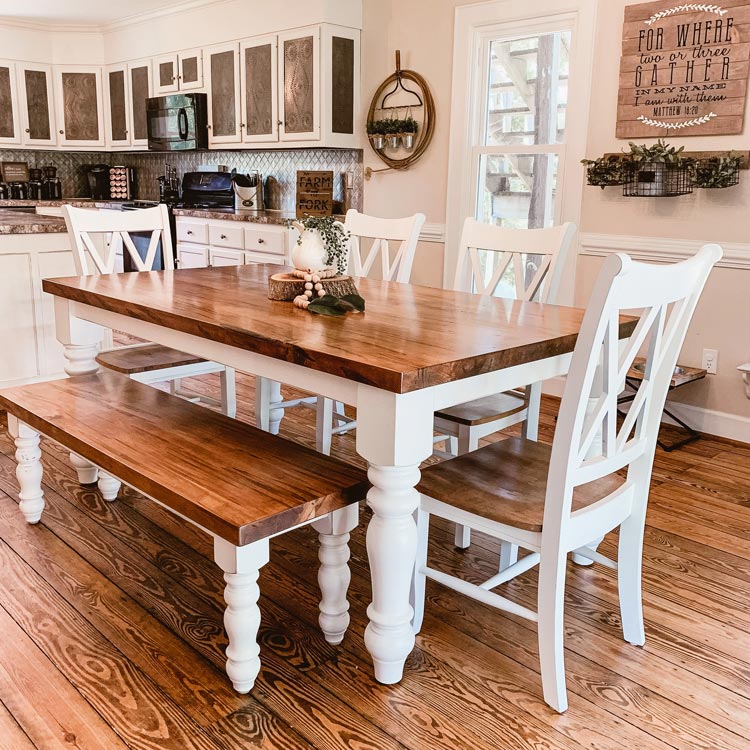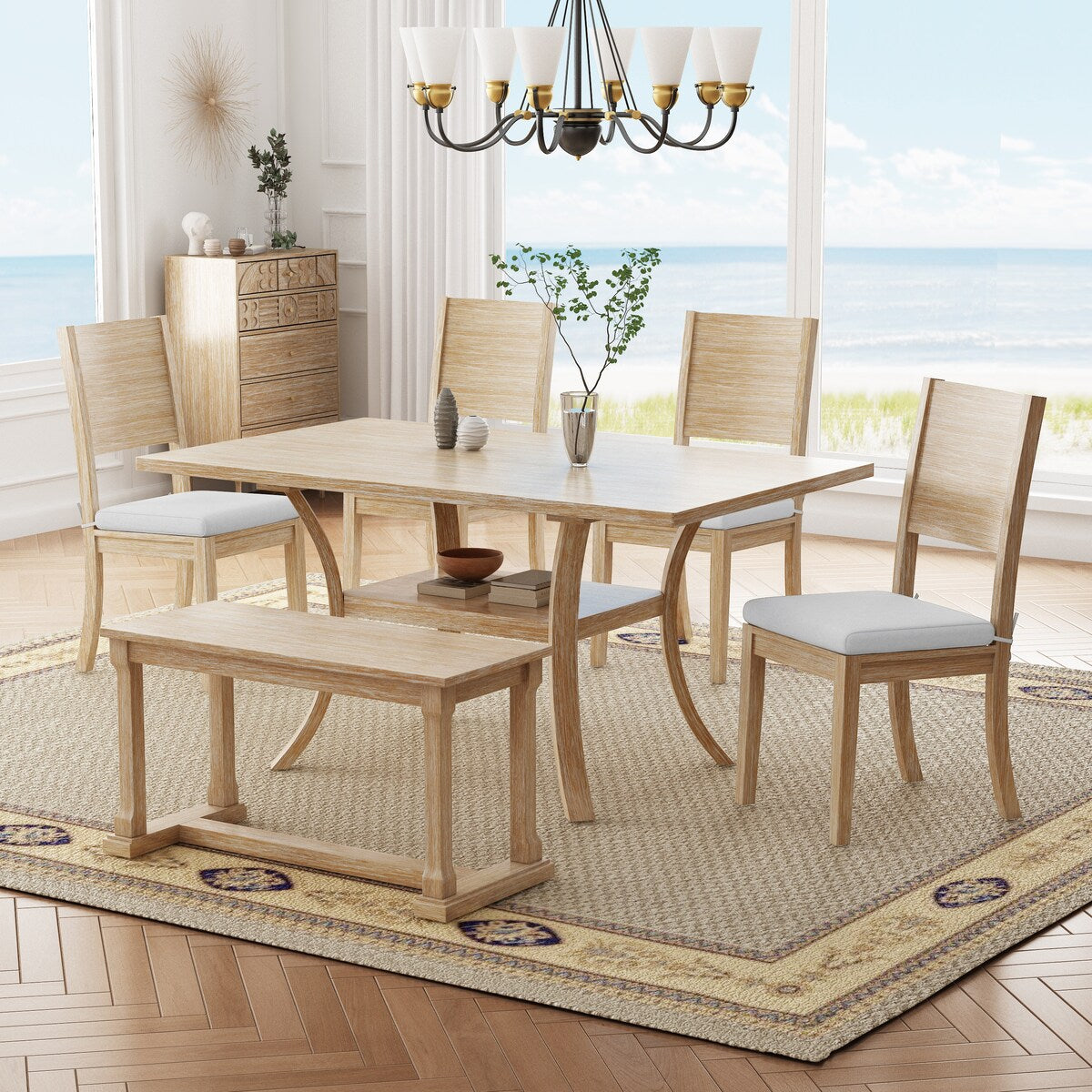How to Choose the Perfect Dining Room Table Legs for Your Home
How to Choose the Perfect Dining Room Table Legs for Your Home
Blog Article
From Traditional to Modern: Locate the Suitable Dining-room Table Legs for Your Design
While classic layouts such as cabriole and turned legs stimulate a feeling of classic sophistication, modern styles like barrette and geometric alternatives provide a possibility for striking visual rate of interest. As you take into consideration these aspects, the concern continues to be: how can you perfectly incorporate these diverse leg designs to create an unified dining experience?
Comprehending Table Leg Styles
The range of dining room table leg styles can substantially affect both the visual appeals and functionality of the room. Each leg design adds unique functional attributes and aesthetic aspects, dealing with varied design choices and use demands. Comprehending these styles is critical for choosing the appropriate table that lines up with your overall interior decoration vision.
For circumstances, conical legs offer a tidy, classic appearance that can enhance a space's elegance, while pedestal bases provide security and take full advantage of legroom, making them excellent for smaller sized areas. Barrette legs, a characteristic of mid-century contemporary design, introduce an industrial flair, permitting an airy, open feeling. In a similar way, trestle legs evoke rustic beauty, offering robust assistance and a sense of timelessness.
Wooden legs can bring warmth and texture, whereas metal choices typically communicate a streamlined, modern ambiance. Ultimately, understanding table leg styles is crucial for developing a cohesive eating area that reflects individual design while guaranteeing functionality and convenience.
Standard Table Leg Options
When selecting dining space table legs, standard alternatives frequently symbolize timeless style and craftsmanship. These styles mirror an abundant heritage and a commitment to top quality, making them excellent for those who value traditional aesthetics.
One of the most famous conventional leg styles is the cabriole leg, defined by its elegant curved shape. This style commonly features attractive carvings and is most generally found in Queen Anne and Chippendale furnishings. An additional prominent option is the turned leg, which flaunts a series of smooth, rounded forms that supply a timeless look while maintaining stability.
Additionally, the straight leg, while simple, provides a unadorned and strong structure that can mix effortlessly with a range of tabletop designs. For those drawn to ornate detailing, claw-and-ball feet legs stimulate a sense of majesty and can function as a spectacular centerpiece in any kind of dining room.
Finally, stand bases, although not strictly legs, supply a different standard option that permits ample legroom and can be wonderfully carved. Each of these conventional leg designs adds to the general ambiance of a dining-room, weding function with aesthetic appeal.

Modern Table Leg Layouts
Modern table leg designs use a varied variety of styles that stress cutting-edge products and tidy lines. These styles frequently prioritize performance while acting as striking prime focus within an eating area. Minimalist looks prevail, with legs crafted from materials such as metal, glass, and crafted wood, which add to a ventilated and modern feeling.
One preferred layout is the hairpin leg, characterized by its slim, conical structure that provides security without frustrating the table top (dining room table legs). This design is often located in mid-century contemporary furnishings and can easily match numerous table forms. Another pattern is the use of geometric shapes, where legs may tackle angular or unbalanced kinds, adding visual passion and a touch of artistry

Blending Designs for Distinct Spaces
Frequently, home owners seek to create one-of-a-kind eating rooms that show their individual design by mixing different style aspects. This strategy allows for the consolidation of varied appearances, resulting in a harmonious yet distinctive setting. Pairing a rustic wooden table with smooth, contemporary metal legs can create a captivating comparison that raises the area's overall appeal.
Furthermore, integrating vintage table legs with contemporary table tops can evoke a sense of background while maintaining a modern perceptiveness. Such mixes not just display private preference but likewise encourage creativity, permitting house owners to curate an area that really feels both individual and welcoming.
Color plays an essential role in this blending procedure; picking table legs that enhance or comparison with the existing color pattern can boost aesthetic rate of interest. Whitewashed legs can soften the daring look what i found of a dark table surface our website area, developing a well balanced aesthetic.
Tips for Selecting the Right Legs
Choosing the right table legs is vital for attaining both capability and aesthetic allure in your dining space. Begin by considering the total design of your space. Standard setups take advantage of legs that include elaborate carvings or turned layouts, while modern areas might ask for smooth, minimalist styles.
Next, evaluate the elevation and security of the legs. dining room table legs. Standard table vary between 28 to 30 inches in height, so make certain the legs enhance this measurement for convenience. Additionally, robust products, such as wood or steel, can enhance stability and long life
Review the leg form too-- options consist of directly, tapered, or stand designs. Straight legs offer a traditional appearance, while tapered legs can add a touch of beauty. Pedestal bases provide enough legroom and are excellent for smaller spaces.
Verdict
In summary, picking the suitable eating area table legs calls for mindful factor to consider of both contemporary and standard styles. Standard choices such as cabriole and transformed legs offer timeless elegance, while modern layouts like barrette and geometric shapes supply a modern touch. By harmonizing leg design, height, and material with the total decoration, a natural and inviting atmosphere can be accomplished. Ultimately, the chosen table legs must mirror the preferred next page aesthetic, boosting the eating experience within the area.
The selection of dining room table leg styles can considerably influence both the looks and performance of the space. Eventually, understanding table leg styles is important for developing a cohesive dining location that mirrors personal style while making sure functionality and comfort.One of the most legendary typical leg designs is the cabriole leg, defined by its elegant rounded shape. Straight legs offer a classic appearance, while conical legs can add a touch of style.In summary, choosing the ideal eating space table legs needs mindful factor to consider of both conventional and modern styles.
Report this page